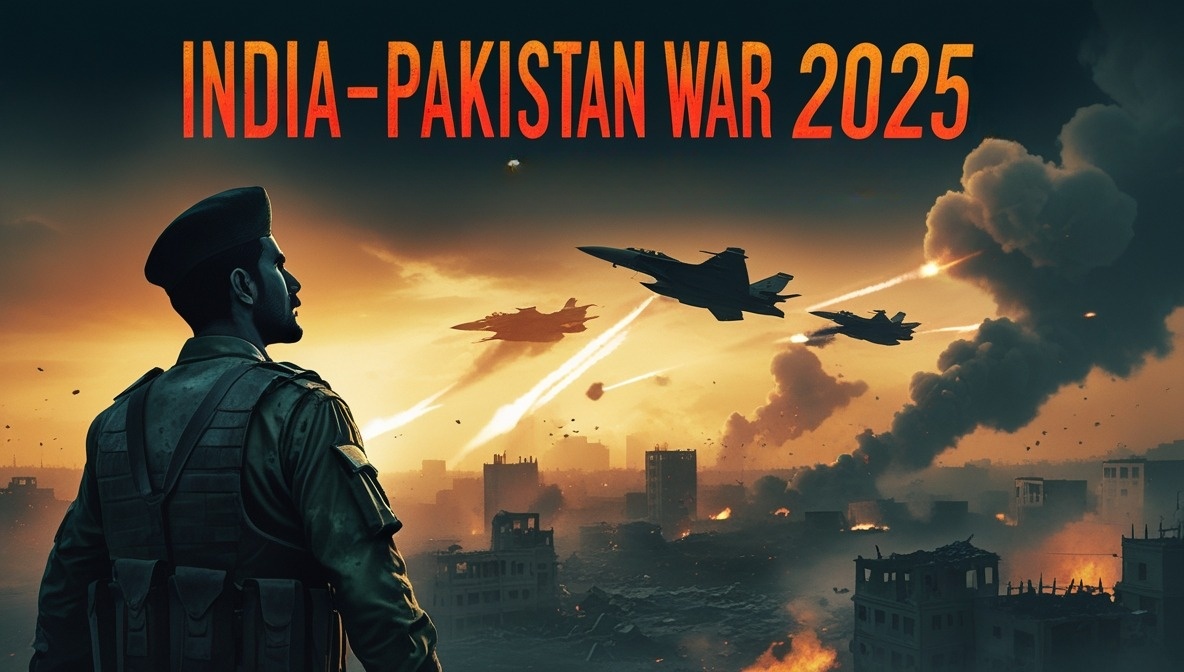The India-Pakistan conflict over Kashmir, a contentious issue since the 1947 partition of British India, escalated significantly in May 2025. Triggered by a deadly terrorist attack in Indian-administered Kashmir, the conflict involved direct military confrontations between two nuclear-armed nations, raising global concerns. This article provides an in-depth look at the historical context, the events of May 2025, the international response, civilian impacts, and the current status as of May 11, 2025.
Historical Context
The roots of the India-Pakistan conflict trace back to the 1947 partition, which created India and Pakistan as independent states. The princely state of Jammu and Kashmir, with a Muslim-majority population but a Hindu ruler, became a flashpoint. The maharaja's decision to accede to India after an invasion by Pakistani herders sparked the first Indo-Pakistani War (1947-1948), resulting in the division of Kashmir along the Line of Control (LOC), with India controlling the larger portion and Pakistan administering the northern and western parts (Council on Foreign Relations).
Subsequent conflicts include:
- 1965 War: A border skirmish escalated into a full-scale war.
- 1971 War: India supported the creation of Bangladesh from East Pakistan.
- 1999 Kargil War: Pakistani soldiers crossed the LOC, leading to a limited but intense conflict.
Kashmir has also been a hub for terrorism, with notable incidents:
- 2008 Mumbai Attacks: Attributed to Lashkar-e-Taiba, allegedly linked to Pakistan’s ISI, killing 166 people.
- 2016 Uri Attack: Militants killed 18 Indian soldiers, prompting Indian “surgical strikes” in Pakistani-administered Kashmir.
- 2019 Pulwama Attack: Jaish-e-Mohammad claimed responsibility for killing 40 Indian soldiers, leading to Indian airstrikes and Pakistani retaliation.
In 2019, India’s revocation of Article 370, which granted Kashmir special status, was viewed as a provocation by Pakistan, further straining relations (Al Jazeera).
The Trigger: Pahalgam Attack
On April 22, 2025, a terrorist attack near Pahalgam in Indian-administered Kashmir killed 28 civilians, mostly Hindu tourists. India accused Pakistan of supporting cross-border terrorism, specifically pointing to Jaish-e-Mohammad and Lashkar-e-Taiba. Pakistan denied involvement, but the attack intensified tensions, setting the stage for military escalation (Wikipedia - 2025 India–Pakistan conflict).
Operation Sindoor: India’s Response
On May 7, 2025, India launched Operation Sindoor, conducting airstrikes on nine locations in Pakistan and Pakistani-administered Kashmir, including Bahawalpur and Muridke. India claimed the targets were terrorist camps of Jaish-e-Mohammad and Lashkar-e-Taiba. The operation utilized advanced weaponry, including:
- Rafale aircraft
- SCALP missiles
- AASM Hammer glide bombs
- BrahMos cruise missiles
- SkyStriker loitering munitions
Pakistan reported 31 civilian deaths, including two children, and claimed to have shot down five Indian Air Force planes, including three Rafale jets. India acknowledged three fighter jets crashed, with pilots hospitalized (CNN - May 7, 2025).
Pakistan’s Counter-Strikes
On May 8, Pakistan responded with drone and missile strikes. India claimed to have negated these using its S-400 missile system, Sudarshan Chakra, in its first combat use. India also conducted Suppression of Enemy Air Defenses (SEAD) and Destruction of Enemy Air Defenses (DEAD) operations, neutralizing Lahore’s air defense. Pakistan claimed to have shot down 12 Indian drones and 25 Harop loitering munitions (Reuters - May 8, 2025).
Escalation and Ceasefire
The conflict escalated on May 9 and 10:
- May 9: Pakistan media claimed India attacked Gurdwara Janam Asthan, which India denied. Pakistan reported neutralizing 77 Indian drones since May 6. Artillery fire occurred in Kupwara, Poonch, Uri, and Samba, with Pakistan targeting 26 locations, injuring a civilian family in Firozpur (The New York Times - May 9, 2025).
- May 10: India launched five missiles from Srinagar targeting Islamabad, Lahore, Rawalpindi, and three Pakistani Air Force bases (Nur Khan, Rafiqi, Murid), all intercepted. Pakistan initiated Operation Bunyan al-Marsus, claiming cyberattacks on Indian domains and launching a Fatah-II rocket aimed at Delhi, intercepted near Sirsa. Heavy fighting at the LOC near Sialkot and Rajouri killed five (CNN - May 9, 2025).
On May 10, a ceasefire was agreed upon at 5:00 pm IST (11:30 UTC), brokered by 36 countries and announced by Donald Trump. However, violations were reported, with explosions in Srinagar and Jammu (The Guardian - May 10, 2025).
International Response
The international community urged restraint and diplomacy:
- United Nations: Called for “maximum restraint” (UN News).
- Iran: Offered mediation for de-escalation.
- Russia: Issued a travel advisory for Pakistan.
- China: Urged de-escalation.
- Bangladesh and UAE: Supported peace talks.
- United States: Issued a Level 4 “Do Not Travel” warning for Jammu and Kashmir (Wikipedia - 2025 India–Pakistan standoff).
Civilian Impact
The conflict disrupted civilian life significantly:
- Aviation: India closed 27 airports, canceling over 430 flights. Major airlines like Air India, IndiGo, and SpiceJet suspended operations. Pakistan halted flights from Karachi, Lahore, and Sialkot. International carriers rerouted to avoid Pakistani airspace (CNN - May 8, 2025).
- Blackouts: Jammu, Amritsar, and Kutch experienced blackouts amid drone sightings and explosions.
- Casualties: Civilian deaths included a three-year-old girl in Pakistan and injuries in Firozpur, India (TIME - May 10, 2025).
- Cultural Impact: The release of a Bollywood film featuring Pakistani actor Fawad Khan was canceled due to escalating tensions.
The following table summarizes the civilian impacts:
| Impact Area | Details |
|---|---|
| Aviation Disruptions | 27 Indian airports closed, 430+ flights canceled; Pakistan suspended flights |
| Blackouts | Jammu, Amritsar, Kutch affected by power outages |
| Civilian Casualties | 31 Pakistani civilians, including children; injuries in Firozpur, India |
| Economic/Cultural | IPL matches rescheduled, Bollywood film release canceled |
Current Status
As of May 11, 2025, the ceasefire holds, but tensions remain high. Pakistan declared May 11 Yaum-e-Tashakur (Day of Gratitude), with Prime Minister Shehbaz Sharif claiming victory. India reported two armed forces personnel killed in the past 24 hours due to Pakistani shelling. The Indian Air Force stated that Operation Sindoor continues with precision (NDTV - May 11, 2025). No new updates were reported on May 11, indicating a fluid situation.
Conclusion
The 2025 India-Pakistan conflict highlights the enduring challenge of the Kashmir dispute. While the ceasefire offers a temporary reprieve, the underlying issues—territorial claims, terrorism allegations, and mutual distrust—persist. The nuclear capabilities of both nations amplify the stakes, making diplomatic efforts critical. The international community’s call for dialogue underscores the need for a sustainable resolution to ensure regional and global stability.


